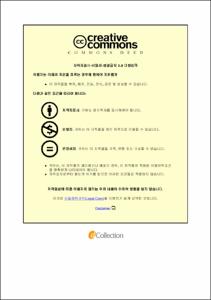정적챔버에서 디젤-에탄올 혼합연료의 분사압력과 분사기간이 분무특성에 미치는 영향
- Alternative Title
- An experimental study on the Spray characteristics of Diesel and Ethanol using the Constant Volume Chamber under varied injection duration and pressure
- Abstract
- One of the alcohols that is considered as a possible additive to diesel fuel is ethanol. This is due, among other things, to the fact that this alcohol can be produced from raw materials of plant origin and therefore can be considered as a fully renewable fuel. It is also important that dehydrated ethanol exhibits a relatively good solubility in diesel fuel compared to its counterparts. Furthermore, ethanol (C2H5OH) is one of the most important components of biodiesel fuel and promising alternative fuel in IC engines. Oxygenates such as ethanol has been widely used in IC engines because of their improved volatility and higher latent heating properties. Nonetheless, there are some complications such as lowered heating value, phase separation, pour point and unsafety conditions for storage and transportation of the ternary blends. With this respect, a blending between Diesel and Ethanol for conduct of the experimental study on spray characteristics using a constant volume combustion chamber was carried out. In this thesis, a blending percentage of 20% ethanol at 99.9% purity and 80% diesel will be utilized, which is denoted as DE20. A single hole research injector is utilized to inject the fuel into the combustion chamber. Due to the optical access of the Constant Volume Chamber (CVC), the spray images of the injected fuel have been analyzed to determine the spray development, spray penetration length, spray cone angle, spray area and spray volume. On the other hand, as there is no moving piston in CVCC, a typical diesel engine-like condition prior to fuel injection has been generated by nitrogen insertion to desirable pressure under ambient temperature. Two different ambient density conditions of 15 and 30 kg/m3 similar to CI engine condition is demonstrated with three different injection pressures. The common rail fuel injection pressure was maintained equally to investigate the low to high injection pressure range; 500 bar, 800 bar and 1100 bar respectively. At the same time, injection duration variations from 800 to 2000 μs with the step of 400 μs are also considered with an aim to lay the scope on during which time the injector starts to partly open until reaching fully opened. Indeed, a test matrix has been created to demonstrate the experimental results. The results of the all-about spray characteristics will be illustrated, making it a useful reference for future spray analysis of new fuels. At the same time, this use of diesel-ethanol can open up new opportunity for the reduction in diesel consumption and reduce undesirable emissions.
- Issued Date
- 2023
- Awarded Date
- 2023-08
- Type
- Dissertation
- Alternative Author(s)
- Tran Quang Khai
- Affiliation
- 울산대학교
- Department
- 일반대학원 기계공학전공
- Advisor
- 임옥택
- Degree
- Master
- Publisher
- 울산대학교 일반대학원 기계공학전공
- Language
- eng
- Rights
- 울산대학교 논문은 저작권에 의해 보호 받습니다.
- Appears in Collections:
- Mechanical Engineering > 1. Theses(Master)
- 파일 목록
-
-
Download
 200000690420.pdf
기타 데이터 / 2.46 MB / Adobe PDF
200000690420.pdf
기타 데이터 / 2.46 MB / Adobe PDF
-
Items in Repository are protected by copyright, with all rights reserved, unless otherwise indicated.